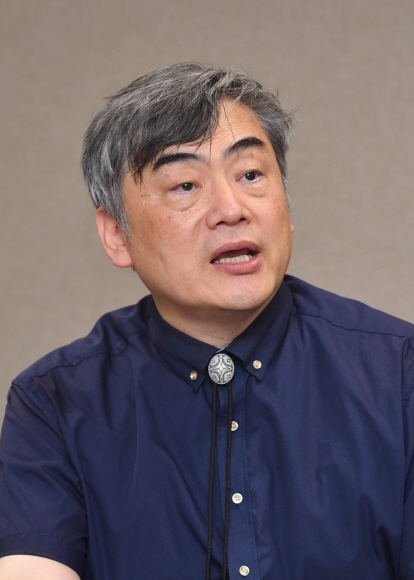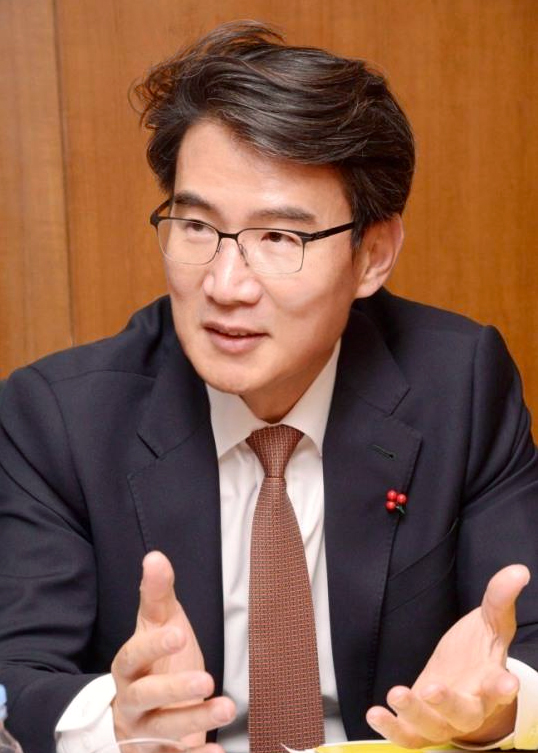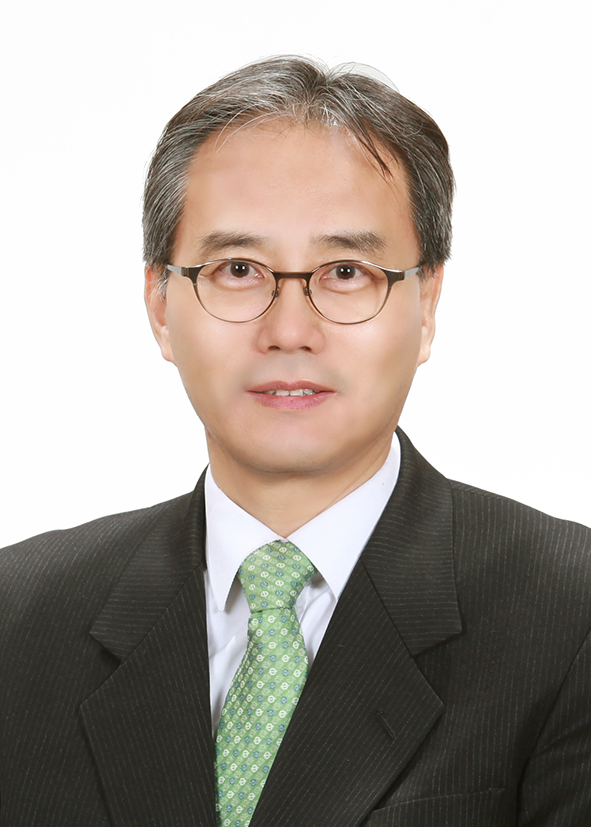
Recently, discussions on policy and legislation regarding the privatization of public services have become the center of debate in South Korea. From railways, electricity, gas to even medical care, rising support for privatization in the public sector has raised concerns and worries. Such intense debate about the extent to which the government should partake in public services has prompted a further need to reexamine their role in our lives.
Rising Demand for Privatizing Public Services
The incident that propelled the privatization dispute into the public sphere was the computer failure in the national administrative network last November. It lasted for three days, causing widespread inconvenience from failing to handle civil complaints and document issues. It also disrupted crucial administrative work, including the verification of ID cards and the management of tax and real estate matters. This precipitated the need for privatization of public services, with the ruling party’s floor leader asserting that large companies should be allowed to participate in managing state-run computer networks. Thus, an issue that had long been considered a “hot potato” topic was spotlighted again.
Probing Privatization: What It Is
The definition of privatization is derived from the word “private,” representing the economic process of transferring a business, industry, or service from public to private ownership and control. This term has recently become the center of political and economic controversy, with heated disputes worldwide regarding its potential benefits and drawbacks. To fully understand the concept of privatization, it is crucial to understand its history.
South Korea’s Privatization History
South Korea’s progression towards privatization dates back to the Park Chung-hee administration. From 1968 to 1989 when Park was president, key public entities such as Hankook Machine, Korea Ocean Business Corporation, Korea Shipbuilding Corporation, Incheon Steel, Korean Air, Mining Industry, and Walker Hill Hotels instigated privatization efforts. The aim was to address the inefficiency and poor management of monopolistic public enterprises.
Following Park, the Chun Doo-hwan administration took over and privatized Hanil Bank, Jeil Bank, Seoul Trust Bank, and Choheung Bank as an effort to streamline the financial industry. Institutional measures including management evaluation systems were also introduced through the Framework Act on the Management of Government Investment Institutions in 1984. Improving the efficiency of public enterprises was the key initiative to these changes. However, the marketization strategies of privatization were not deeply reflected in the overall policies of public institutions.
It was in 1987 when the Privatization Promotion Committee was established, setting the foundation for expediting full-scale privatization. The committee selected 25 government-invested institutions and five government-funded institutions for privatization. During the Kim Young-sam administration from 1993, the marketization strategy of public institutions began to be led by economic bureaucrats, preparing specific plans and schedules to pursue the implementation of privatization.
During the following Kim Dae-jung administration, significant changes such as restructuring and the privatization of government agencies were made due to the foreign exchange crisis and the IMF. Pohang Steel was also privatized in September 2000. Later on, when Lee Myung-bak became president, he later facilitated an “advanced” privatization policy. At that time, Lee focused on deregulating large corporations, cutting taxes, opening up the financial sectors, and the marketization of education and medical care. The privatization of Korea Heavy Industries and state-run textbooks, once delayed, was carried out also. The government earned 19 trillion won in fiscal income from the sales that followed.
The current administration under Yoon Seok-yeol is alleged to be implementing privatization policies in a “disguised” manner. By emphasizing private investment and market opening, the Yoon government aims to expand the private consignment of public hospitals, industrialize personal medical data, and entrust railway maintenance work to a private organization. Currently, the government is pushing to open the power grid business to private companies due to the increased debt of the Korea Electric Power Corporation. A bill authorizing private energy corporations to sell to third parties passed the National Assembly Standing Committee last November, privatizing the gas wholesale sector. The railway sector is also promoting the opening of railway facility maintenance work to private companies, and similar measures are being implemented in the medical sector by easing regulations on the non-medical healthcare service industry and consigning the city medical center to university hospitals.
Socioeconomic Perspectives on Privatization
This prolonged trend embedded in Korean history is closely related to the actual formal declaration to privatize everything during the 1997 IMF crisis when the economic system was reorganized into a neoliberal structure. Moreover, privatization in the national health insurance system was also pursued around the same period.

Professor Shin Young-jeon, in the Department of Preventive Medicine at Hanyang University, gave insight into the socioeconomic background to explain the process of privatization. He stated that people with power and money, who are expected to primarily pursue their own interests in a capitalist society, packaged their attitudes under the name of neoliberalism. As a result, the concept became a central operating ideology in all areas, from the industrial sector to public healthcare.
So, how exactly does making a corporation “private” contribute to increased fiscal revenue? While there is still ongoing debate on views regarding the mechanisms of privatization’s profit generation, one of the possible explanations is that the process of privatizing reinforces competitiveness and the fiscal income of a company.

Professor Park Jhung-soo, from the Public Policy Department at Ewha Women’s University, asserted his opinion. “A government-led system alone cannot guarantee profits and efficiency. If the government intervenes too much in a company, its goal becomes short-term. On the other hand, private companies are competitive in setting and achieving long-term goals.” He further highlighted the economic benefits of privatization focusing on the aspect of productivity. “The basic principle is that being productive being productive leads to smaller deficits and less accumulated debt. Because public enterprises are evaluated annually by the Public Institution Management Act, they focus on writing ‘good’ reports rather than striving for innovation. If we privatize companies with appropriate regulations, it will result in much higher productivity.”
When Public Services Go Private: What are the Complexities?
In the midst of South Korea’s economic discussions, the privatization of public services has sparked an active debate encompassing social welfare, economic inequality, and access to essential resources. Following privatization, there have been several controversies regarding the allocation of funds for internet installation in remote areas and the maintenance of communication infrastructure. It suggests that discussions on the privatization of public services must consider a variety of variables and wide-ranging impacts. This calls for a balanced approach and transparent discussion in the policy-making process, achieved through communication with the public.
Furthermore, the push for privatization in the transportation sector, particularly highlighted by the subway Shinbundang Line, underscores the intricate nature of funding public infrastructure in South Korea. Since last year, the basic fare for the Seoul metropolitan subway has increased from 1,250 won to 1,400 won, a rise of 150 won. However, the fare hike on the privately operated Shinbundang Line was up threefold. The Shinbundang Line, being the first privately proposed, built, and managed “private investment route” in the country, commands relatively higher fares due to its unique status. Yet, it is important to note that high fares are not inherent to private investment routes. Railroad fares are determined through agreements between authorities and operating companies and can vary based on demand forecasts and the financial circumstances of the jurisdiction. For instance, other private lines like Seoul Metro Line 9 and the Airport Railroad from Seoul Station to Cheongna International City have adjusted their business models to receive financial support, enabling them to charge the same fares as regular lines. The operator of the Shinbundang Line has emphasized the necessity of fare increases, stating that without any financial assistance from the government or local authorities, such an increase is the minimum required to offset their losses. This highlights the challenging balance of privatization without compromising public accessibility and affordability.
Between Public Interest and Private Profits
The opposition of citizens to privatization can be attributed to concerns over social welfare and economic polarization. Particularly, there are concerns about monopolization over public utility such as water, electricity, and gas. Thus, the direction of economic policy should not only aim to stimulate economic development but also consider alternative strategies to address social welfare issues and ensure the smooth provision of public services.
Professor Shin expressed concern that as privatization progresses, medical service costs could increase, limiting medical access for low-income groups and exacerbating social inequality. “If medical privatization proceeds, it will become difficult to protect essential medical areas. A tendency to prioritize profitability could lead to a concentration of medical personnel in specific areas. This issue is not merely a matter of individual choice among medical professionals but reflects a contradictory demand by current policy trends that encourage profit-making while simultaneously trying to curb it,” he added. This deepens the disconnection between the public function of providing essential basic medical services and the reality. Therefore, setting the goal of the healthcare system with the promotion of public health protection as the top priority is the most crucial task.

On the other hand, Professor Cho Sung-bong, in the Department of Economics at Soongsil University argued, “Most countries have private firms that supply water, sewerage, power, and gas services. These businesses are naturally monopolistic, making it inefficient and costly to have several companies supplying the same goods or services. Hence, the only viable choice is to have a major monopoly, which may result in higher pricing for customers. To prevent this, regulation by an independent regulator is necessary. Public utilities are not necessarily required to be supplied by public corporations.” It simply means that public utilities should be regulated by an independent regulator to ensure that their rates and services are appropriate. Professor Cho added that, “In countries like South Korea, where the government operates public utilities such as electricity, gas, water supply, and railways through public corporations without implementing independent regulation over their pricing and services, there is a tendency for the fees of these public utilities to be excessively lowered due to the influence of political powers or the discretion of the government. Therefore, in cases where the government excessively regulates the fees, leading to a distortion in the operation of public utilities through public corporations, it would rather be more beneficial to opt for privatization, allowing private companies to run these services, and to establish a suitable independent regulatory body to reasonably regulate the prices and services of public utilities.” Setting appropriate fee levels in such situations would discourage consumers from overconsumption, thereby averting the decline of public utilities.
Moreover, he emphasized, “When it comes to public utility that are challenging to provide independently, it is crucial to collect taxes and ensure that the government supplies them forcefully.” If public utilities are priced too low, the government must inevitably make up the shortfall with tax revenue as consumer fees alone would not cover the costs. As a result, both the actual users and taxpayers will end up sharing the burden of these costs. He suggested that if consumers bear the full cost, they will be more inclined to conserve and use electricity more efficiently.
Challenging the Privatization Paradigm
In exploration of privatization, it becomes imperative to delve into the nuanced perspectives that shape our understanding of public sector efficiency and public welfare.

Professor Kim Sung-hee of Korea University’s Graduate School of Labor Studies critiqued the market-centric approach that advocates for privatization as a panacea, highlighting the realities of infrastructure projects that defy simple solutions. He asserted that the myth of privatization, which is nothing more than dividing profits by breaking up monopolies, should be scrapped. “It is essential to revamp the management system of public institutions, prioritizing the public interest and ensuring efficiency through thorough evaluation of their operations. The value of publicness is becoming increasingly important to combat inequality and mass poverty. To reaffirm the value of publicness in systems and policies, it is necessary to transform the public sector management evaluation system into an operational evaluation system, to strictly evaluate the viability of large-scale infrastructure projects, and to establish a system to accurately calculate the causes of deficits and debt.” he said. Professor Kim suggested the importance of policies that address both economic performance and societal well-being. This perspective invites a more balanced discussion on privatization, encouraging a holistic approach to public policy formulation.
Navigating a Balanced Path: The Future of Privatization in South Korea
The privatization of public services can significantly influence individuals’ access to essential resources needed to maintain a basic standard of living, depending on their income level. This situation could lead to increased labor exploitation among citizens and a reduction in public participation activities, ultimately weakening the exercise of sovereignty through political involvement. Public service privatization, progressing towards increased efficiency and cost-cutting by private enterprises acquiring services, often leads to deteriorating labor conditions and workforce reductions. This process can impose excessive workloads, reduce wages, and increase unstable employment forms, potentially escalating into labor exploitation. Thus, expanding publicness should not only focus on maintaining or enhancing the role of public institutions but should also be considered within the context of democracy’s regression and progress.
In navigating these complex issues, it is crucial to focus on having a broader discussion regarding the methods of privatization, rather than debating the concept of privatization itself. Encouraging diverse stakeholders, including the government, the private sector, and the public, to engage in open and inclusive discussions will play a vital role in successfully navigating the privatization process. Ensuring that the conversion to privatization benefits all members of society is imperative.
The debate surrounding privatization transcends a simple choice between maintaining public services as they are and transitioning them to private ownership. It invites a deeper exploration into the methods and conditions under which privatization might proceed in alignment with societal benefits. This conversation extends beyond binary opposition, demanding the engagement of a diverse range of participants to ensure that any move towards privatization not only preserves but potentially enhances access to essential services for all citizens, without eroding the universality of such access. Viewing this conversation as an opportunity for societal progress involves considering the advantages of organizational change while also ensuring citizens’ access to essential services is protected. At the core of the conversation lies the significance of clear communication among various stakeholders, such as government entities, private companies, and the public. Their collective engagement is vital in devising a privatization approach that is fair, viable, and consonant with the collective ethos and requirements of the community.

